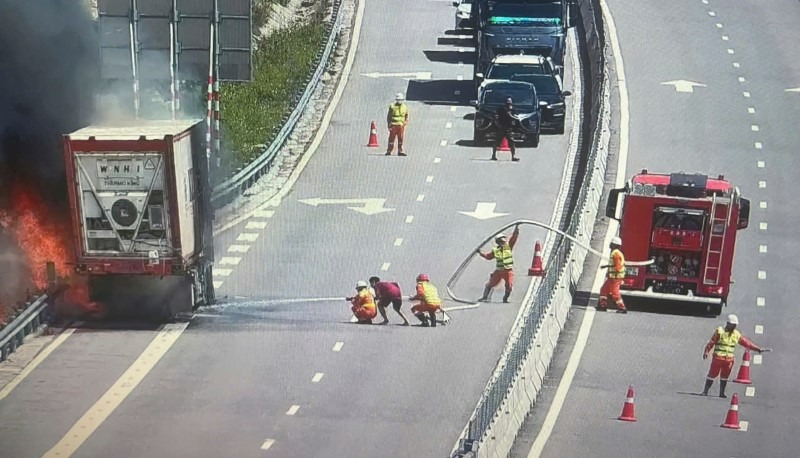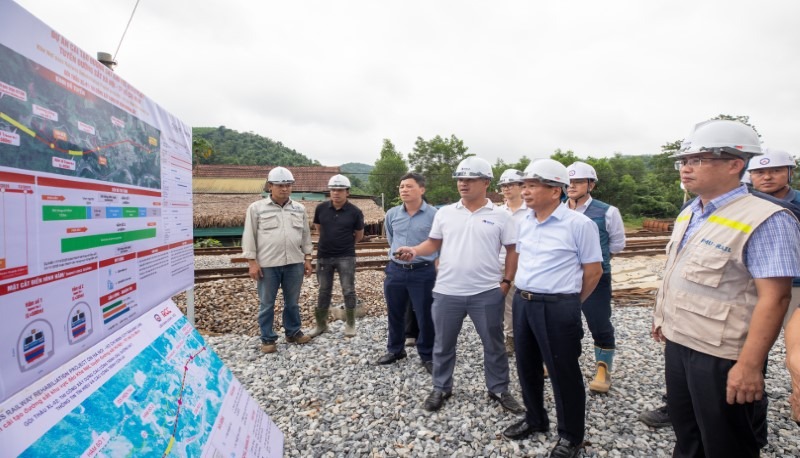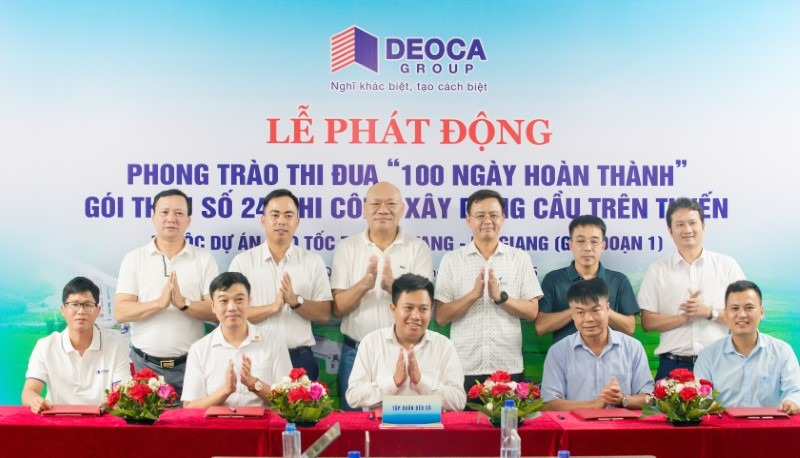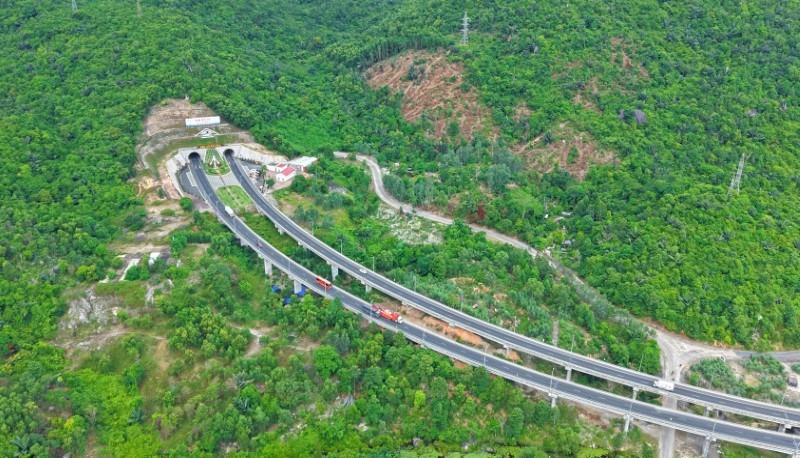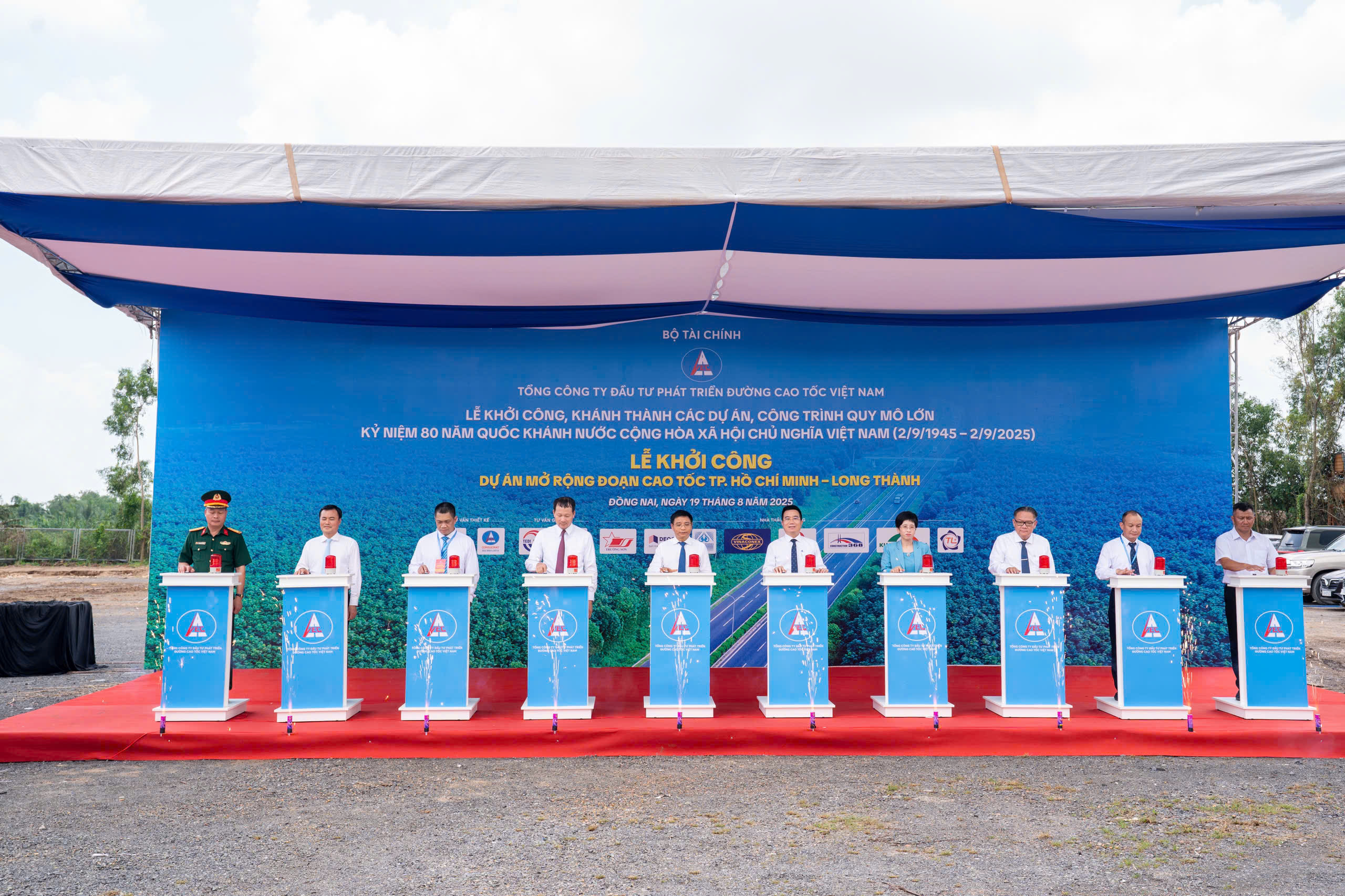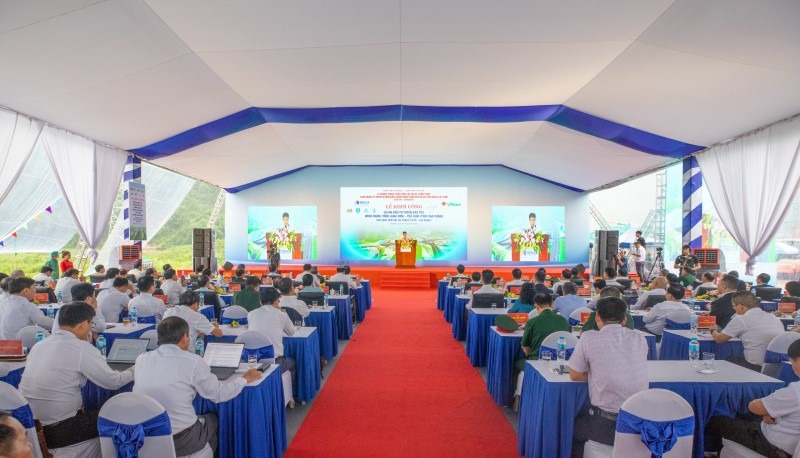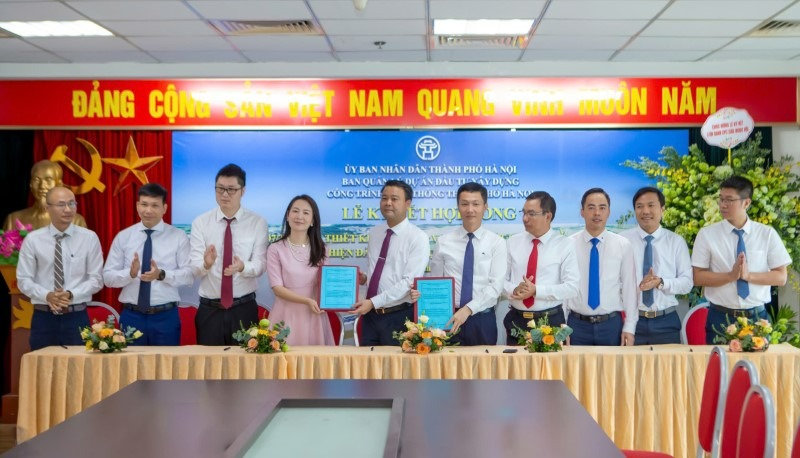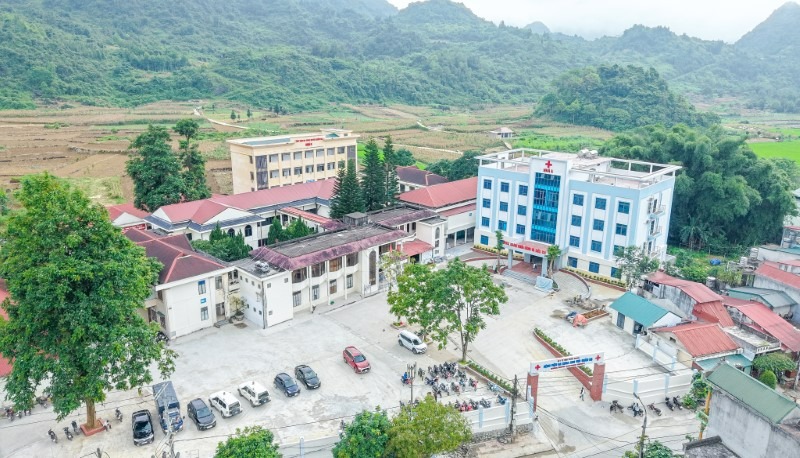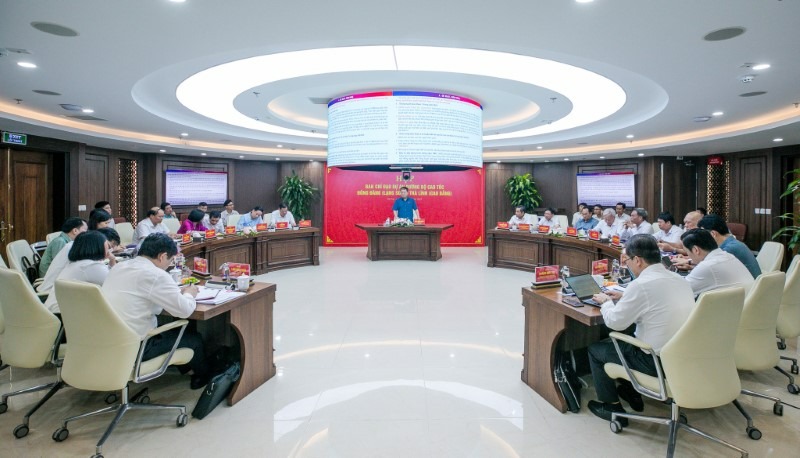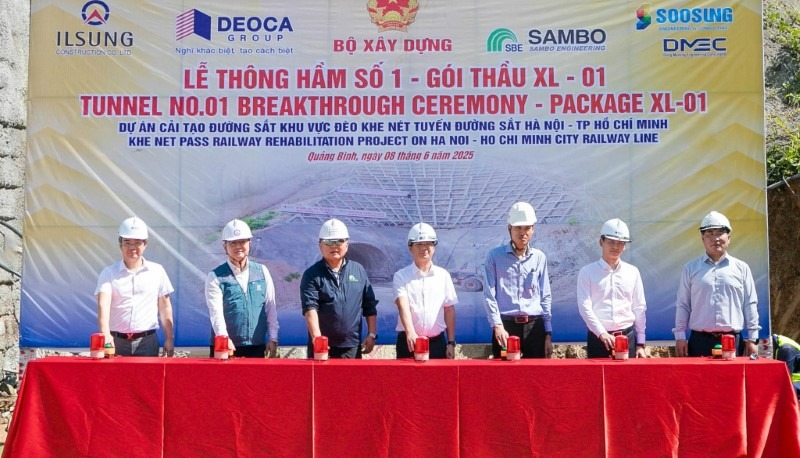On June 18, 2025, the Binh Duong People's Committee held a groundbreaking ceremony for the Ring Road 4 project in Ho Chi Minh City, section from Thu Bien bridge to Saigon river, passing through Binh Duong province. The ceremony was attended by Deputy Prime Minister Mai Van Chinh, Former President Nguyen Minh Triet, and leaders from central ministries and local authorities, as well as investors and banks.
The Ring Road 4 project in Ho Chi Minh City, section from Thu Bien Bridge to Saigon River (Phase 1), is being implemented under the PPP model with a total investment of 444.58 million USD. Phase 1 includes four lanes with continuous emergency stopping lanes and a design speed of 100 km/h.
The investor consortium consists of Investment and Industrial Development Corporation - JSC (Becamex IDC), Becamex Infrastructure Development JSC (Becamex IJC), and DEOCA Group JSC.
In his remarks at the ceremony, Mr. Mai Van Chinh, the Deputy Prime Minister, acknowledged the proactive efforts of Binh Duong's Party Committee, government, and people in carrying out socio-economic tasks. He also praised the crucial role of strategic investors like Becamex Corporation and DEOCA Group, which are actively implementing many key projects across the country.
“Today's groundbreaking is just the beginning. The workload ahead is immense, and we will have to overcome many great challenges to ensure the project's quality, progress, safety, and efficiency,” Deputy Prime Minister Mai Van Chinh said. He also urged central ministries, local authorities, and investors to continue their close coordination and carry out the project with the highest sense of responsibility.
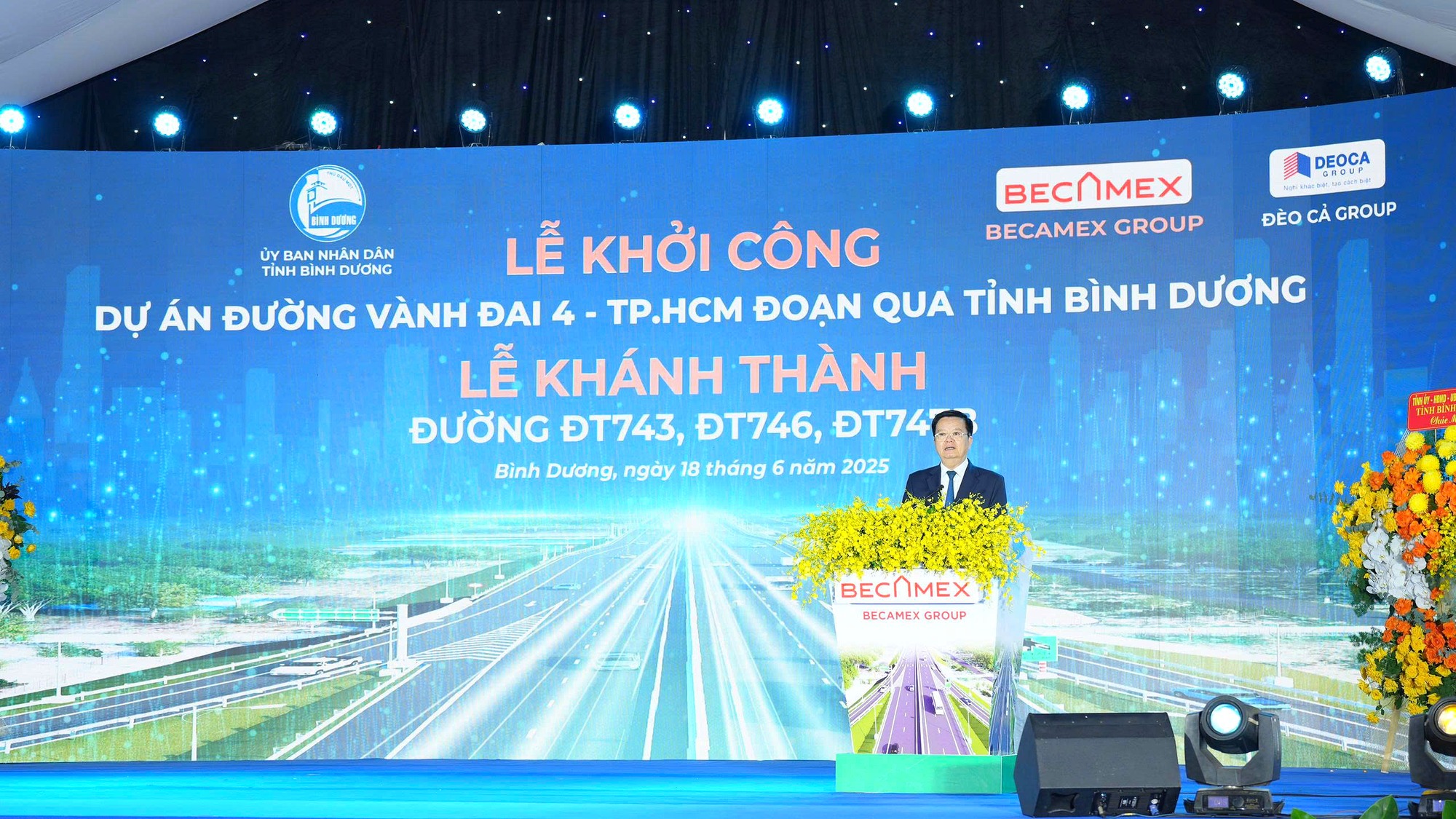
Mr. Mai Van Chinh, the Deputy Prime Minister, delivered a directive speech at the project’s groundbreaking ceremony.
To complete the project by 2027, the Deputy Prime Minister called on local authorities to stay close to reality, be decisive in their management, and resolve any difficulties that arise during project implementation. He also asked them to accelerate land clearance and the relocation of technical infrastructure so contractors can focus on construction. Additionally, he stressed the importance of resettlement and livelihood support for residents to have new homes.
Reporting on the project, Mr. Pham Ngoc Thuan, Vice Chairman and General Director of Becamex IDC Group, said that Ring Road 4 is a strategically important east-west backbone that will connect the province's development hubs and link regions. He added that the route will provide quick access to major ports and international airports, such as Cai Mep - Thi Vai Port and Long Thanh Airport. Along with Ring Road 3, Ho Chi Minh City - Thu Dau Mot - Chon Thanh expressway, Ho Chi Minh road, and other connecting routes, Ring Road 4 will create a complete and modern transportation network.
“Becamex IDC Group has partnered with DEOCA Group - Vietnam’s leading reputable and most experienced company in transport infrastructure development, to establish a consortium which has all the best conditions to implement not only the section of Ring Road 4 through Binh Duong province, but also other projects across the country,” Mr. Thuan said.
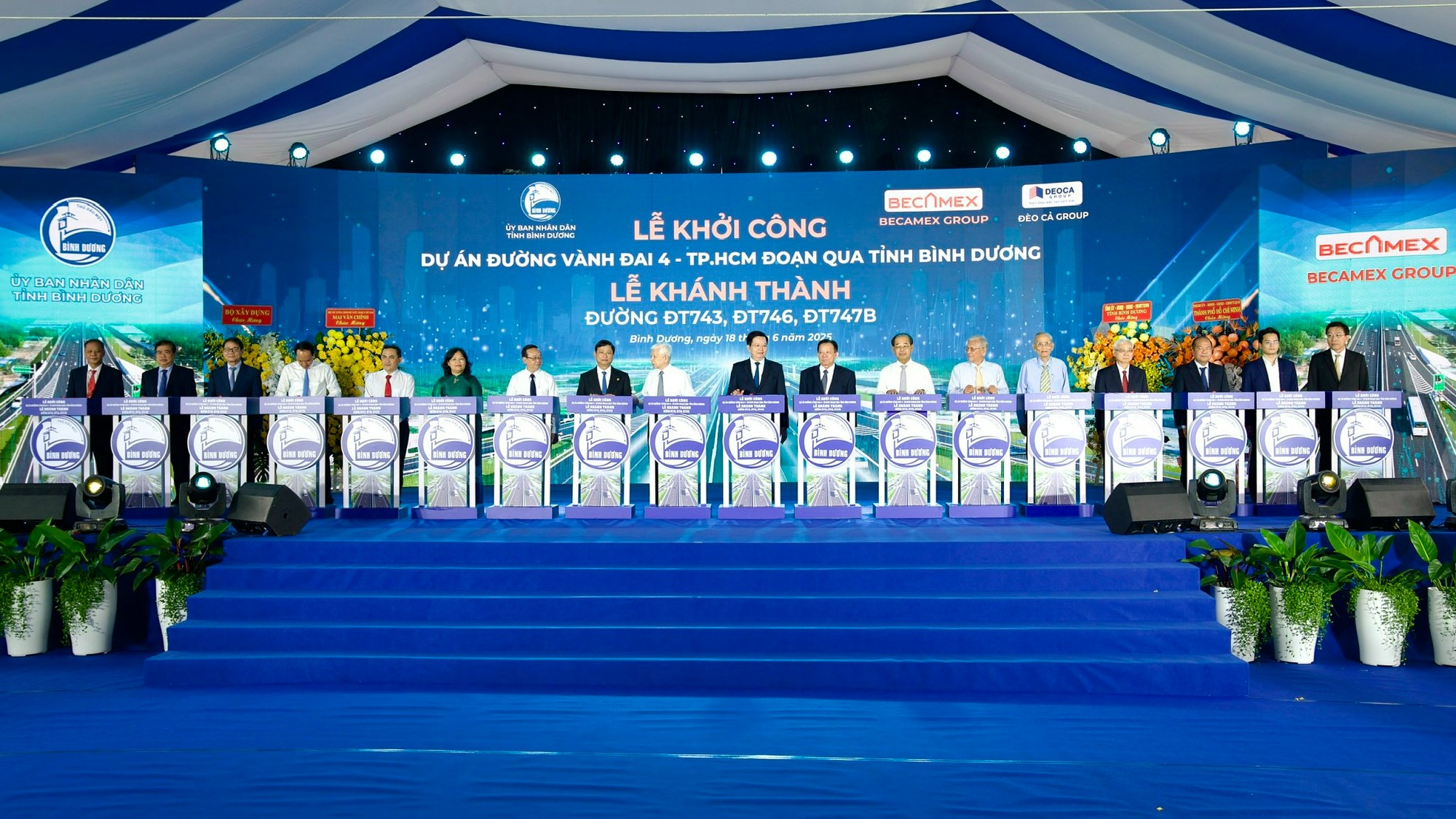
The delegates performed the groundbreaking ceremony.
Earlier, at the beginning of February 2025, the Becamex - DEOCA Group consortium broke ground on a 52 km section in Binh Duong province of Ho Chi Minh City - Thu Dau Mot - Chon Thanh expressway, with a total investment of nearly 757.2 million USD.
During the groundbreaking ceremony, the investor consortium and partner banks also signed a credit agreement to provide funding and financial support for the project's implementation.
The implementation of the Ho Chi Minh City Ring Road 4 project in Binh Duong province is a political task of historical and national strategic importance. As the outermost ring road, it will connect 5 provinces and cities: Ho Chi Minh City, Binh Duong, Dong Nai, Long An, and Ba Ria - Vung Tau. The route will not only ease traffic congestion but also shape a new development space for Ho Chi Minh City megacity expansion, creating an economic spillover for the entire region and the country.
To meet the historic demand for a major transformation, investing in a synchronized transportation infrastructure, especially the ring road system, is the key to unlocking a future of sustainable, modern, and deep regional connectivity. This will directly contribute to Vietnam’s long-term vision of becoming a prosperous and powerful nation by 2045, as set by the Party and the State.
News: Lam Tra - Photo: To Hung


